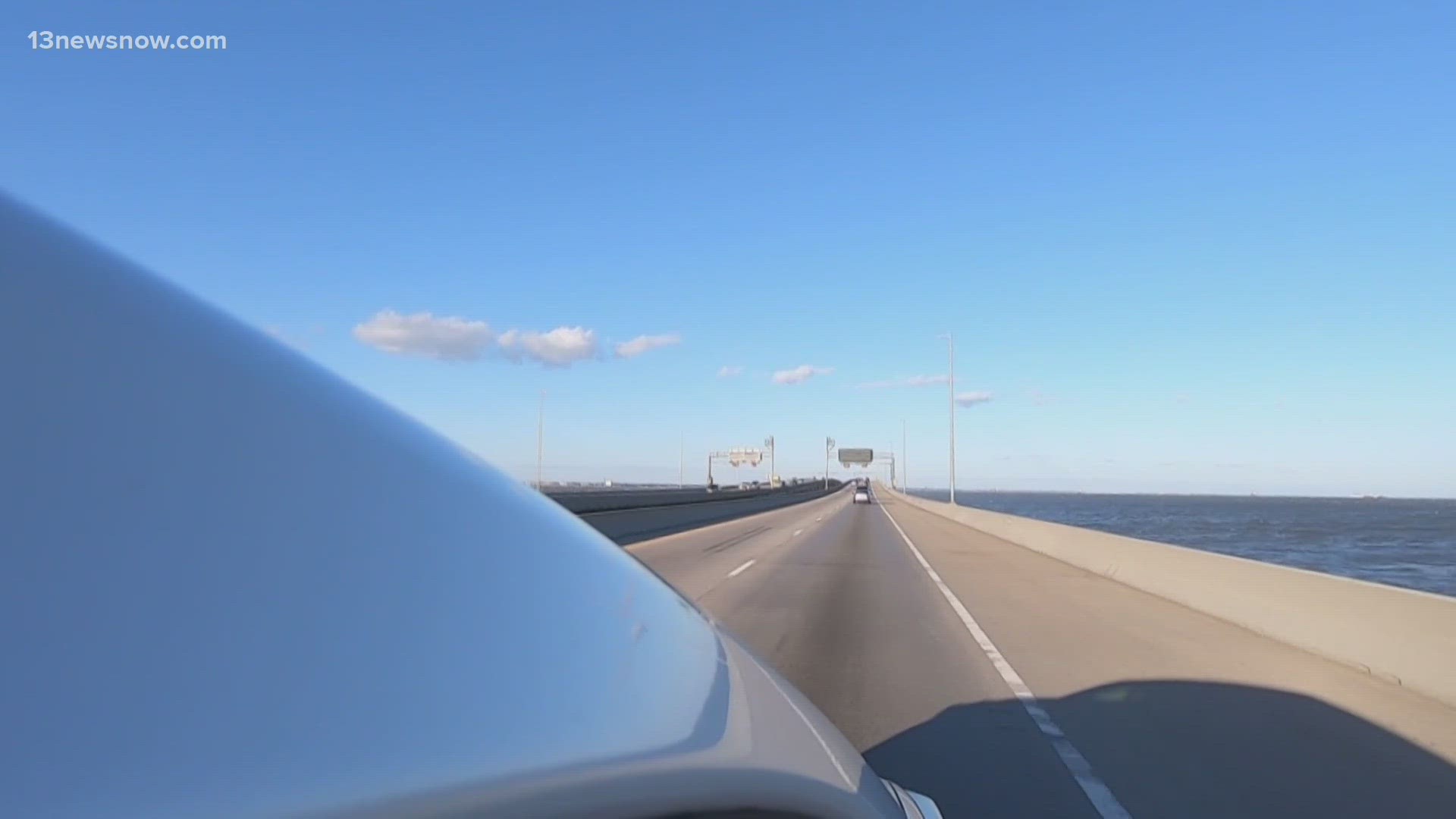VIRGINIA, USA — 13News Now examines the state of major bridges in Hampton Roads, as their structural safety plays a critical role in how we get around every day.
In a coastal area like Hampton Roads, you're bound to cross a bridge somewhere.
"I use HRBT a lot going to Northern Virginia. I use Monitor Merrimac when that's messed up," said Daniel Flood, a Virginia Beach resident.
"Could be a couple times a month, could be a couple times a week," said Norfolk native Tony Person, when asked how often he travels over local bridges.
With more than 1,200 bridges, our Virginia Department of Transportation (VDOT) district actually has a fewer amount compared to many other parts of the Commonwealth, according to VDOT District Maintenance Manager Bill Collier.
"But, we have more important chokepoints. Those bridges crossing major bodies of water, our only options to get across a certain point," Collier said.
Collier explained bridge assessments are required by the federal highway system every two years.
"I think if there are no consistent issues, every two years is fine, but if that should start arising, I think every year would be appropriate," said Norfolk resident Elizabeth Weir.
Professors at Old Dominion University (ODU) who specialize in civil engineering called the inspections crucial and necessary.
"Inspection includes different parts; for example, superstructure and substructure. They inspect the deck, bracing, the column, abutment and so on, every place," said ODU Senior Lecturer in the Department of Civil & Environmental Engineering Shahin Amiri.
Bridge inspectors use this zero-to-nine scale. Scores could fall into the poor, fair or good categories.
The latest VDOT data show nearly 98% of structures in Hampton Roads are in fair or good condition.
Collier shared how our major crossings, namely the Hampton Roads Bridge-Tunnel, Monitor-Merrimac Memorial Bridge-Tunnel, James River Bridge and High Rise Bridge, stack up.
"Fair or higher," Collier said. "We do have one bridge leading to the Hampton Roads Bridge-Tunnel that is our only structurally deficient on the interstate system in this district. That is in the works of being replaced with the new expansion project."
Collier warned the term "structurally deficient" does not mean it's unsafe.
"That just means that as we do our inspections, there's something part of the asset we need to address," said Collier.
Collier noted Hampton Roads had approximately 40 poorly scored bridges five years ago. He said that number is now down to 18.
"We're fixing them at a higher rate than older bridges are falling into that category," he said.
"Bridges and tunnels and infrastructure in general, all actually, to me, it's like comparable to a human body," said ODU Professor Zia Razzaq, who also works in the university's Department of Civil & Environmental Engineering.
To further enhance safety, local educators suggested the large-scale installation of wireless sensors on key bridges and tunnels.
"The sensors could be sending messages to some kind of centralized station. That would be like keeping a hand of the pulse of a person or attaching a device and see how the heart is functioning," said Razzaq.
However, experts in the field, such as Razzaq and Amiri, recognize that kind of feat would carry a big price tag.
On the topic of funding, VDOT relies on multiple sources, like the state bridge fund.
And according to a national transportation news release, Virginia can expect roughly $7.7 billion over the course of five years for highways and bridges because of the bipartisan infrastructure law.
13News Now also took a closer look at concerns surrounding the Chesapeake Bay Bridge-Tunnel, which is overseen by its own authority, not VDOT.
At least six truck drivers have crashed off its side and fallen into the water since 2014. Hear from one trucker who survived, as he lived to tell his story by clicking here.

